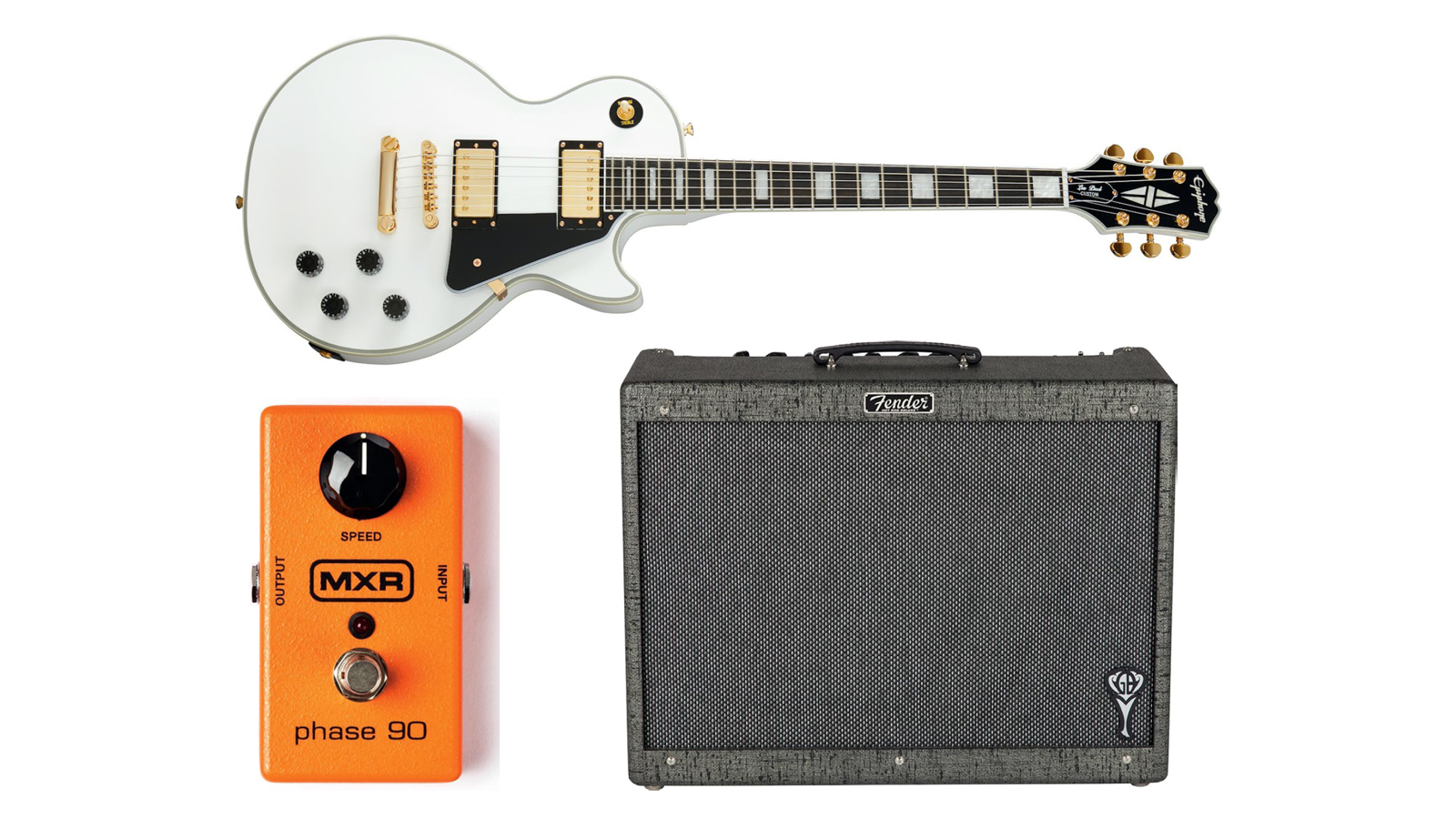The secrets behind Steve Jones' tone on the Sex Pistols' Anarchy in the UK
Find out how the punk rocker achieved his fiery sound on this raucous anti-establishment anthem

More than four decades after its initial release as a single in November 1976, Anarchy in the UK remains the definitive punk rock statement.
Johnny Rotten’s vicious snarl and biting lyrics had a lot to do with that, but what really makes the recording so effective is guitarist Steve Jones’ violent and visceral playing, which still sounds as powerful and dangerous today as it did when it first disrupted the mainstream rock establishment during the mid '70s.
One of the key elements of Jones’ distinctively raw tone was his use of a Fender Twin Reverb amp cranked up as loud as it could go.
During April and May of 1976, Jones appeared on stage playing through either an HH IC100S head or a Marshall Model 1959 Super Lead (both through an Ampeg 4x12), but the Twin became his amp of choice from late June of 1976 and onwards after he stole the combo from the back of a truck when Bob Marley and the Wailers completed a run of shows at London’s Hammersmith Odeon a few weeks prior.
Equipped with heavy-duty Fender-branded Gauss speakers rated at 400 watts, this particular Twin delivered pure power-amp overdrive without preamp compression or speaker-generated distortion, generating violent crunch along with slashing treble, roaring midrange and tight, twangy bass.
Jones played a stock 1974 Les Paul Custom electric guitar, which previously belonged to Syl Sylvain of the New York Dolls, for the recording, with its uncovered humbucking bridge pickup providing sufficient output to push the amp to overdrive.
However, producer Chris Thomas and engineer Bill Price also deserve credit for the guitar tone’s filth and fury for blending numerous overdubs by Jones into a cohesive whole that sounds much bigger than the individual parts.
All the latest guitar news, interviews, lessons, reviews, deals and more, direct to your inbox!
Jones initially laid down a pair of identical rhythm guitar tracks with churning texture courtesy of an MXR Phase 90 (out of sync on each track), but Thomas also encouraged Jones to record various overdubs to emphasize rhythmic accents or fill in blank spaces with feedback. The end result was a massive wall of sound that matched the larger-than-life reputation of a band that was about to change the world.
Get the sound, cheap!

- Epiphone Les Paul Custom
- Fender George Benson Hot Rod Deluxe
- MXR M101 Phase 90
TONE TIP: A jazz amp for punk? Trust me. The GB amp’s extra-clean headroom means crisper, tighter bass and more powerful power-amp crunch when pushed into overdrive that won’t go all soft and mushy on you.
Steve Jones' original gear
GUITAR: 1974 Gibson Les Paul Custom with pickup covers removed (bridge pickup), Volume: 10, Tone: 10
AMP: 1972 Fender Twin Reverb combo with Fender P.S. 12 (rebranded Gauss 2841) 12-inch speakers (Vibrato channel, Input 1, Bright: On, Volume: 10, Treble: 9, Middle: 10, Bass: 8, Reverb: 0, Speed: 0, Intensity: 0, Master Volume: 10)
EFFECTS: MXR Phase 90 (Speed: 3)
STRINGS/TUNING: Unknown, most likely Fender, Gibson or Picato .010-.046/Standard
PICK/SLIDE: Unknown, most likely Fender Heavy
Chris is the co-author of Eruption - Conversations with Eddie Van Halen. He is a 40-year music industry veteran who started at Boardwalk Entertainment (Joan Jett, Night Ranger) and Roland US before becoming a guitar journalist in 1991. He has interviewed more than 600 artists, written more than 1,400 product reviews and contributed to Jeff Beck’s Beck 01: Hot Rods and Rock & Roll and Eric Clapton’s Six String Stories.


